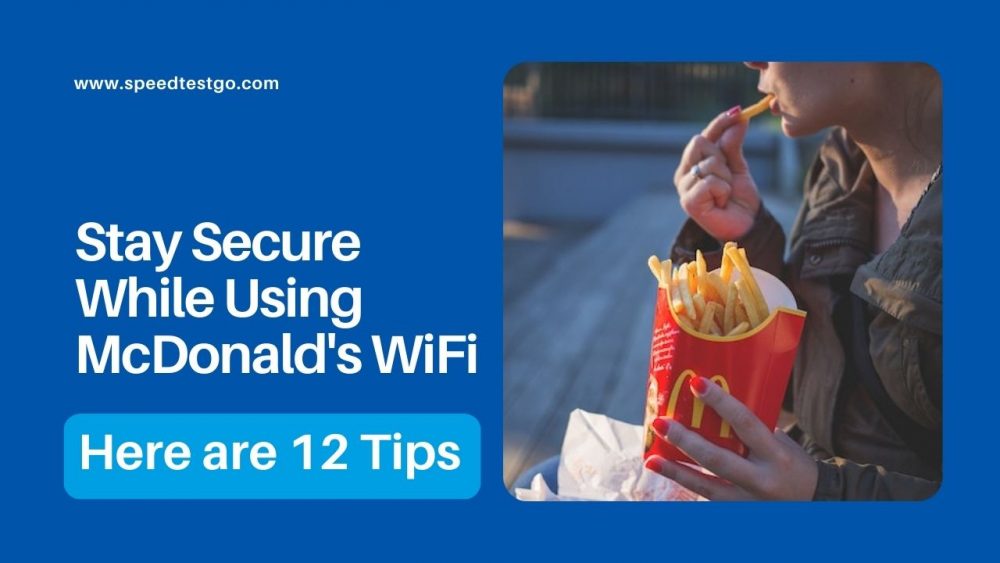McDonald’s, one of the world’s largest fast-food chains, offers free WiFi to its customers in many of its restaurants. While this convenience allows you to stay connected and browse the internet while enjoying your meal, it’s essential to be aware of the potential security risks associated with using public WiFi networks.
In this article, we will provide you with valuable tips on how to stay secure while using McDonald’s WiFi.
Is it safe to connect to McDonald’s free WiFi?
Public WiFi networks, including those offered by McDonald’s, are generally unencrypted or use weak encryption methods. This lack of encryption allows hackers to intercept the data transmitted between your device and the WiFi hotspot.
Additionally, cybercriminals can set up fake WiFi networks with names similar to legitimate ones, tricking users into connecting to them and giving them access to sensitive information.
Here are 12 tips to Stay Secure While Using McDonald’s WiFi:
Tip 1: Use a Virtual Private Network (VPN)
One of the most effective ways to secure your connection while using McDonald’s WiFi is by using a Virtual Private Network (VPN). A VPN encrypts your internet traffic and creates a secure tunnel between your device and the VPN server, ensuring that your data remains private and protected from prying eyes.
Tip 2: Disable Automatic WiFi Connection
To prevent your device from automatically connecting to unknown or potentially unsafe networks, disable the automatic WiFi connection feature. This way, you will have control over the networks you connect to and can verify their legitimacy before establishing a connection.
Tip 3: Ensure HTTPS Encryption
When browsing websites, make sure the websites you visit use HTTPS encryption. The “https://” in the URL indicates a secure connection, encrypting the data exchanged between your device and the website. Avoid entering sensitive information on websites that do not have HTTPS enabled.
Tip 4: Keep Your Devices Updated
Regularly updating your devices, including smartphones, tablets, and laptops, is crucial for maintaining security. Updates often include security patches that fix vulnerabilities and protect against known threats. Enable automatic updates whenever possible to ensure you have the latest security enhancements.
Tip 5: Enable Two-Factor Authentication (2FA)
Enable two-factor authentication (2FA) on your online accounts whenever available. This additional layer of security requires you to provide a second verification method, such as a code sent to your mobile device, along with your password. Even if someone manages to obtain your login credentials, they won’t be able to access your accounts without the second factor.
Tip 6: Avoid Accessing Sensitive Information
While connected to McDonald’s WiFi or any public network, it’s best to avoid accessing sensitive information, such as online banking or entering credit card details. Wait until you have a secure and trusted network connection before conducting transactions or accessing sensitive data.
Tip 7: Be Wary of Phishing Attempts
Stay vigilant for phishing attempts, as cybercriminals may use public WiFi networks to launch their attacks. Be cautious of emails or pop-up messages asking for personal information or login credentials. Verify the legitimacy of the source before providing any sensitive data.
Tip 8: Use a Firewall
Ensure that your device’s firewall is enabled. Firewalls act as a barrier between your device and potential threats from the network, blocking unauthorized access attempts and providing an extra layer of security.
Tip 9: Logout and Forget the Network
After using McDonald’s WiFi or any public network, remember to log out from any accounts you accessed and forget the network on your device. Forgetting the network ensures that your device doesn’t automatically connect to it in the future, minimizing the risk of accidental or unauthorized connections.
Tip 10: Regularly Monitor Your Accounts
Regularly monitor your online accounts for any suspicious activity or unauthorized access. If you notice any unusual behavior or transactions, report them immediately to the respective service provider and take the necessary actions to secure your account.
Tip 11: Use Antivirus Software
Install reputable antivirus software on your devices and keep it up to date. Antivirus software helps detect and remove malware or other malicious programs that could compromise your device’s security. Regularly scan your device for potential threats.
Tip 12: Be Cautious of Public File Sharing
Avoid sharing files or enabling file sharing while connected to public WiFi networks. File sharing can expose your device to potential security risks and make your files accessible to others on the same network.
Conclusion
Using public WiFi networks, such as McDonald’s WiFi, can be convenient, but it’s crucial to prioritize your security. By following the tips provided in this article, you can significantly reduce the risks associated with using public networks.
Remember to use a VPN, disable automatic WiFi connections, ensure HTTPS encryption, keep your devices updated, enable two-factor authentication, and be cautious of phishing attempts.
Additionally, using firewalls, monitoring your accounts, using antivirus software, and being careful with public file sharing further enhance your online security.
FAQs
Q1: Can I trust McDonald’s WiFi for secure browsing?
While McDonald’s WiFi is a convenient option, it’s important to be cautious when using any public network. Follow the security tips mentioned in this article to ensure your browsing remains secure.
Q2: Is it safe to access my online banking while connected to McDonald’s WiFi?
It’s generally recommended to avoid accessing sensitive information, such as online banking, while connected to public WiFi networks. Wait until you have a secure and trusted network connection before conducting financial transactions.
Q3: How does a VPN protect my data while using public WiFi?
A VPN encrypts your internet traffic, making it unreadable to anyone trying to intercept it. This encryption ensures your data remains private and protected from potential eavesdropping or hacking attempts.
Q4: What should I do if I suspect a phishing attempt while connected to McDonald’s WiFi?
If you suspect a phishing attempt, do not provide any personal information or login credentials. Verify the legitimacy of the source before taking any further action.
Q5: Can antivirus software protect my device from all threats?
While antivirus software provides an extra layer of protection, it cannot guarantee absolute security. It’s essential to practice safe browsing habits and follow other security measures mentioned in this article.



